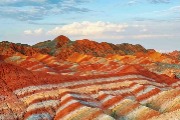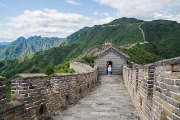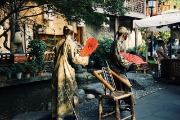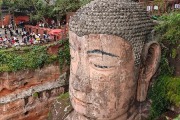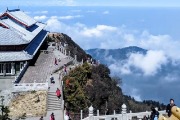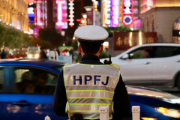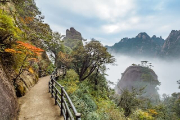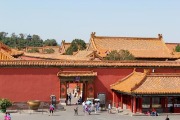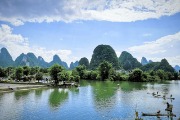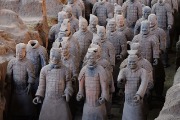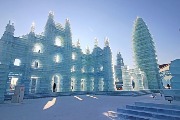Leshan Giant Buddha Sichuan
Standing in front of the Leshan Giant Buddha feels like standing before a giant from heaven, and you can even see the “glow” behind it.
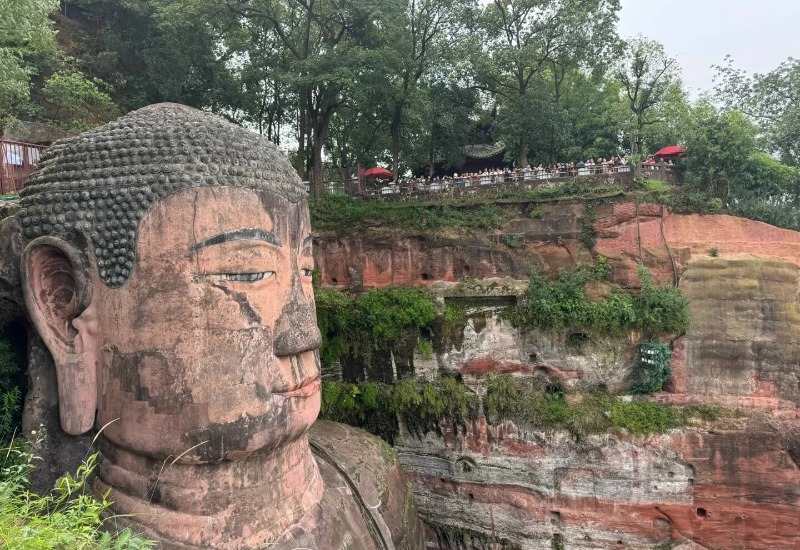
How many stories tall is the Leshan Giant Buddha (乐山大佛)? The answer is 23 stories! Standing at 71 meters tall, it’s the largest cliffside statue in China. Construction started in 713 AD and took 90 years to complete.
To give you a better look at the entire Leshan Giant Buddha area, I’ll walk you through the main spots based on the actual tour route. Of course, when you visit, you won’t just see the giant Buddha. There are other nearby attractions to check out as well, and I’ll cover those too. Finally, I’ll include some FAQs about the Buddha and ticket info.
Table of Contents
Main Attractions of the Leshan Giant Buddha
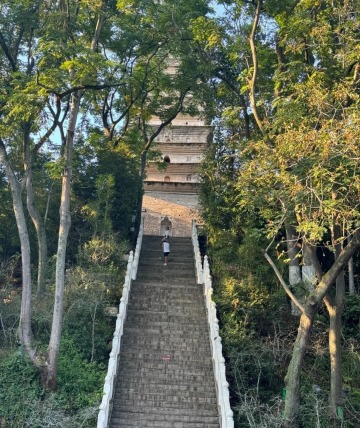
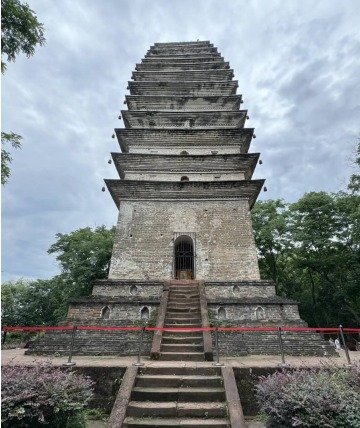
Lingbao Tower (灵宝塔)
Once you enter the Leshan Giant Buddha area, head to Lingbao Tower for a great view of the surroundings. From here, you can look out over the beautiful scenery where three rivers meet, and even catch a distant glimpse of Mount Emei. But be prepared to climb a lot of stairs before you reach the platform around the tower. Inside the Lingbao Tower, there used to be stone-carved Buddha statues, but unfortunately, it’s off-limits for visitors now.
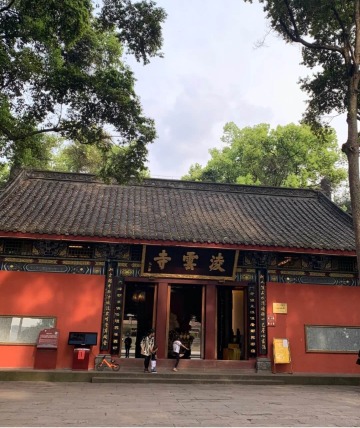
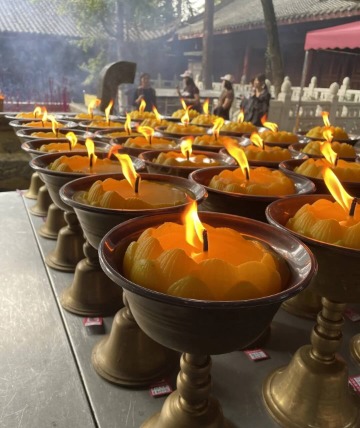
Lingyun Temple (凌云寺)
After visiting Lingbao Tower, head over to Lingyun Temple. It’s located right next to the Buddha’s head at the Giant Buddha Leshan China. The temple was built during the Tang Dynasty, so it’s over 1,400 years old. Inside, you can learn about the history of the Buddha’s construction and repairs, and you can also light incense to pray for peace and good fortune. The temple also houses statues of key figures like Master Haitong, the creator of the Leshan Giant Buddha Sichuan, as a sign of respect and admiration.
Who was Master Haitong? He was originally just a wandering monk. When he passed through Leshan, he decided to build the Leshan Buddha Statue to help local people deal with water spirits in the river. He went around collecting donations, and his kindness moved many people—so much so that they generously supported the project. Think about it: in an era without heavy machinery, carving such a massive statue out of a mountain was no easy feat! Master Haitong led the craftsmen, working tirelessly day after day, year after year, slowly chiseling the giant Buddha out of the rock.
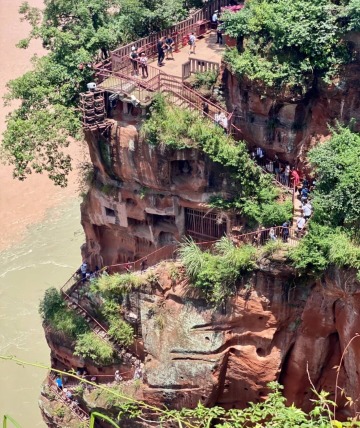
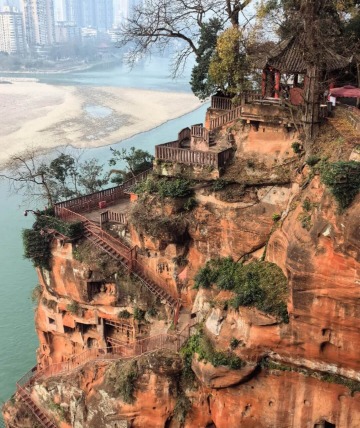
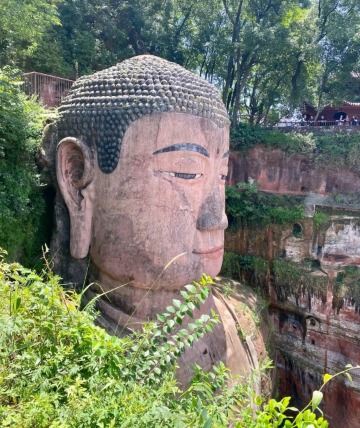
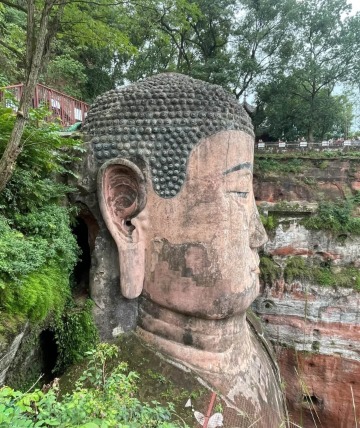
The Nine-Bend Plank Path (Viewing the Buddha’s Head) 九曲栈道 (参观佛头)
The Nine-Bend Plank Path is located on the stone cliff to the right of the Leshan Giant Buddha Sichuan, and it’s the main route for getting up close to the Buddha. From the top of the path, you can observe the Buddha’s head up close and snap a photo with it.
The path was carved at the same time as the Buddha itself, spiraling down from the top to the feet of the statue. It’s quite narrow—only wide enough for one person—and there’s only one path to go up or down, so it can be tricky to navigate when it’s crowded. Along the path, you’ll also see carvings of smaller Buddhas on the stone walls, but due to years of weathering, they’ve become a bit faded. For a period of time, the path was temporarily closed because tourists had damaged the walls.
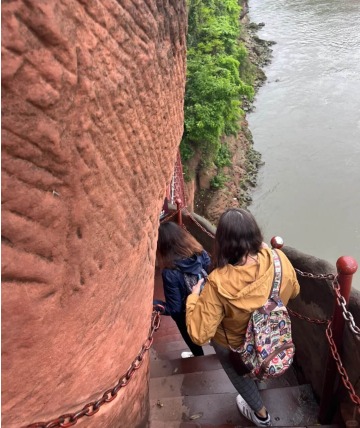
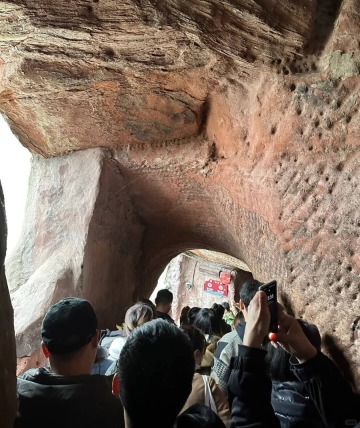

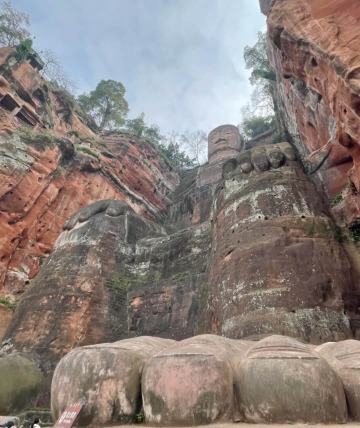
Lingyun Plank Path (Viewing the Buddha’s Feet) 凌云栈道 (参观佛脚)
After visiting the Buddha’s head, you can follow the Lingyun Plank Path down to the Buddha’s feet. This path is tucked away between the steep cliffs on the left side of the Leshan Giant Buddha. At its widest, it’s 1.45 meters, but at its narrowest, it’s only 0.6 meters wide.
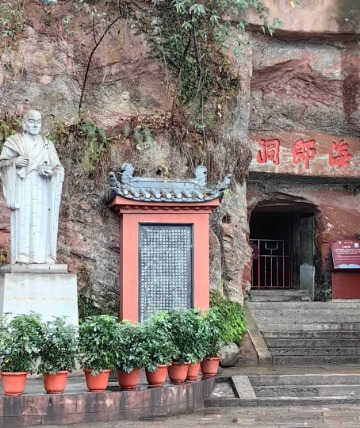
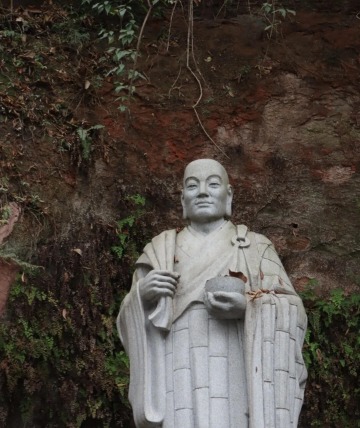
Haishi Cave (海师洞)
After visiting the Leshan Giant Buddha Sichuan, if you continue up, you’ll reach Haishi Cave. According to legend, this is where Master Haitong lived while carving the Buddha. The statue at the entrance represents him.
The Leshan Giant Buddha stands at the confluence of the Min River, Dadu River, and Qingyi River, where the waters are fast and powerful. Master Haitong knew the project would be difficult, but he didn’t hesitate. He took on the challenge, personally overseeing the work and leading the craftsmen to carve the statue out of the mountain, ultimately accomplishing this incredible feat.
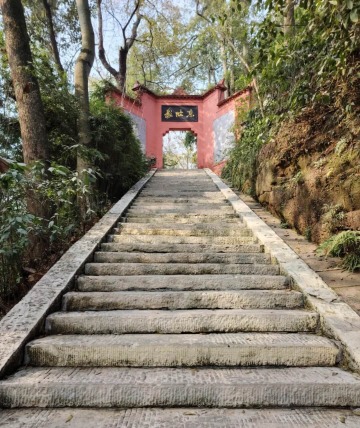
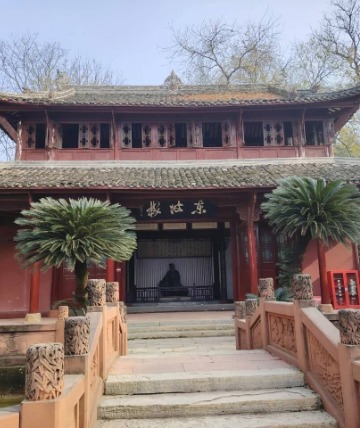
Dongpo Pavilion (东坡楼)
The next stop after Haishi Cave is Dongpo Pavilion. Dongpo Pavilion was built to honor Su Dongpo, a famous poet, writer, and painter from the Song Dynasty. So, why is there a building dedicated to this poet near the Leshan Giant Buddha? Well, Su Dongpo (Su Shi) visited the Buddha at the age of 24 and left behind some stone inscriptions, showing that he had come here to drink and enjoy himself.
Su Dongpo is considered a “Renaissance man” in China. He wrote many well-known essays and poems, and he’s regarded as the top calligrapher of the Song Dynasty. But that’s not all—he was also a foodie and is credited with creating famous dishes like Dongpo Pork, Dongpo Fish, and Dongpo Tofu.
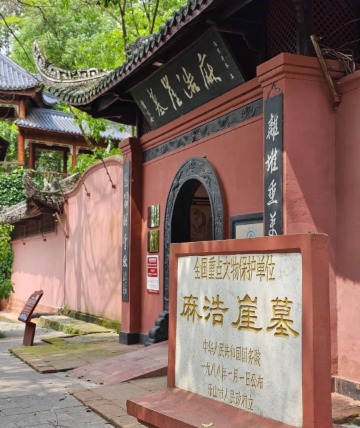
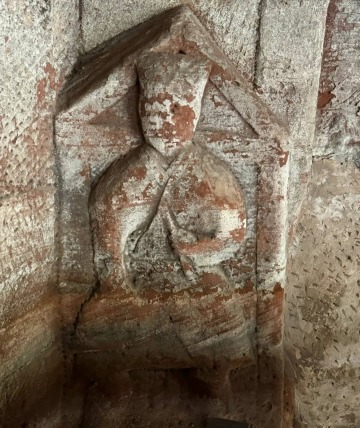
Mahao Cliff Tombs (麻浩崖墓)
The Mahao Cliff Tombs are located at the southern entrance of the Leshan Giant Buddha scenic area. Over 330 ancient cliff tombs are scattered here, offering a glimpse into the unique burial customs of ancient China. These tombs were carved into the mountains by the Han people as a way to bury the deceased, a practice that was popular more than 1,800 years ago, during the Eastern Han to Northern and Southern Dynasties. They’re also known as Eastern Han Cliff Tombs. Inside the tombs, you’ll find preserved elements of Han architecture, images of carriages, musical instruments, birds, beasts, and fish, as well as mythological stories and stone coffins with inscriptions and calligraphy.
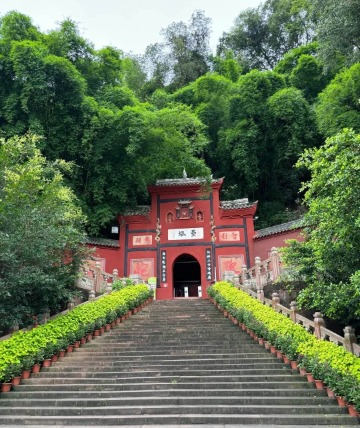
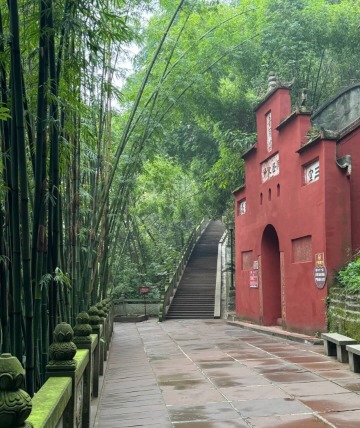
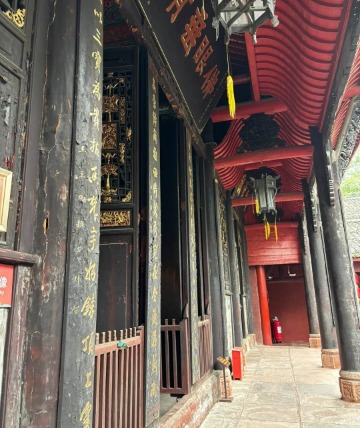

Wuyou Temple (乌尤寺)
Wuyou Temple is located at the top of Wuyou Mountain within the Leshan China Giant Buddha scenic area. Surrounded by lush bamboo and trees, it’s a peaceful, quiet place far from the hustle and bustle of commercialized areas. Most of the temple buildings, including the Heavenly King Hall, Amitabha Hall, Mahavira Hall, Guanyin Hall, and Wuyou Hall, were rebuilt during the Qing Dynasty. The temple is dedicated to Wuyou Bodhisattva, an incarnation of Avalokitesvara (Guanyin), who is believed to help control floods and protect passing ships.
Surrounding Attractions of the Giant Buddha Leshan
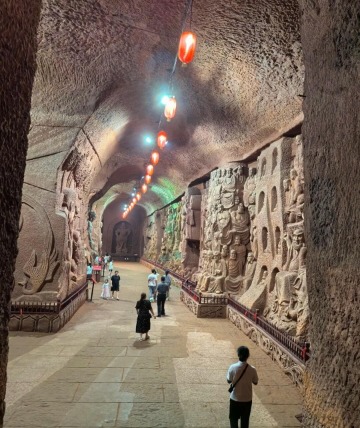
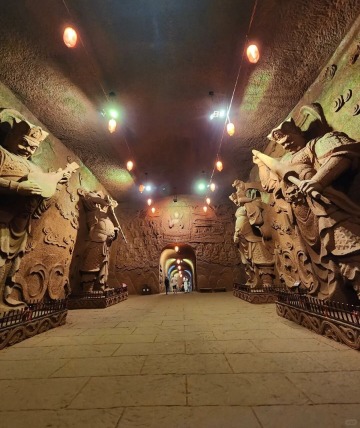
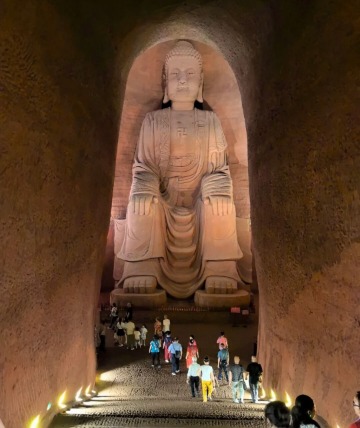
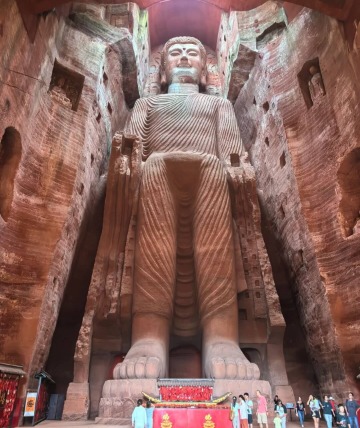
Eastern Buddhist Kingdom (Dongfang Fodu) (东方佛都)
Just 1 kilometer from the Giant Buddha Leshan China, the Eastern Buddhist Kingdom was established in the 1990s and is home to many stone caves and Buddha statues of all sizes. The craftsmanship of the cliff carvings here is exceptional and incredibly challenging. Many of the works were created by professors from the Sichuan Fine Arts Institute and skilled stone carvers, including masterpieces by Chinese sculptor Liu Kaiqu. Major highlights include the Ten Thousand Buddha Cave, Eastern Reclining Buddha, Golden Buddha Hall, and Thousand-Hand Guanyin Cave.
The Eastern Buddhist Kingdom also offers a variety of cultural activities, such as Buddhist lectures and meditation experiences. You can listen to teachings from monks to gain a deeper understanding of Buddhist culture and its spiritual meaning, or try a meditation session to find peace and calm within yourself.
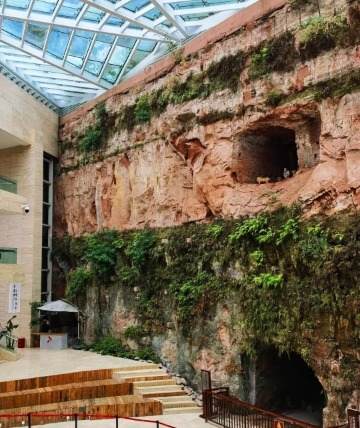
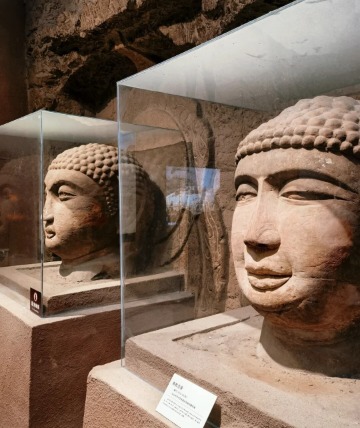
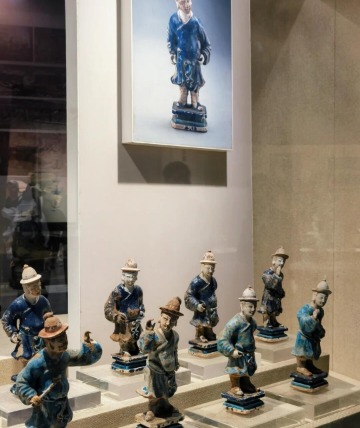
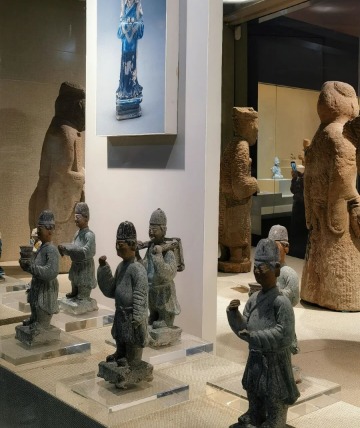
Leshan Museum (乐山博物馆)
The design of Leshan Museum incorporates elements of the cliff tombs, with a modern and eye-catching exterior. One side of the museum features the natural cliff face, reflecting the concept of “born in the mountain, raised by the mountain,” while the other side is covered with red sandstone, matching the surrounding landscape. The roof is made of steel and glass, and when the sun shines, the light and shadow effects inside are stunning.
Inside, the museum has several unique exhibition halls, including the Leshan Giant Buddha Exhibition Hall, a ceramic and stone carving art exhibit, and a calligraphy and painting gallery. The museum is open Tuesday through Sunday (closed on Mondays). During the off-season, hours are from 09:00 to 17:30 (with the last entry at 17:00), and during peak season, it’s open from 09:00 to 19:30 (with the last entry at 19:00).
Ways to Tour the Leshan China Giant Buddha
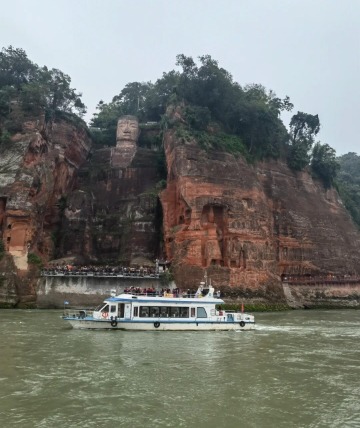
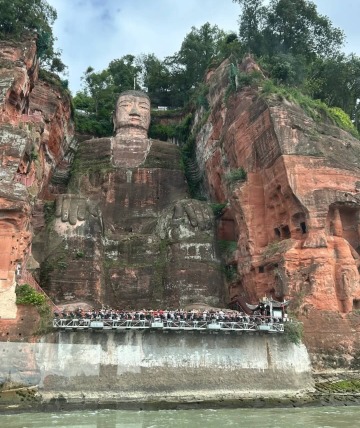
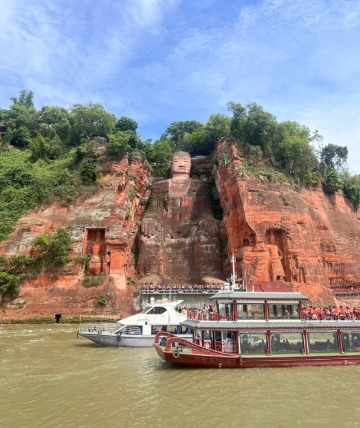
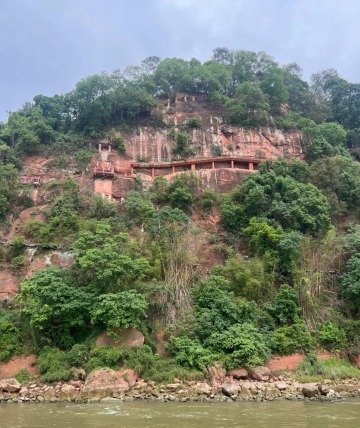
Boat Tour (游船)
There are two piers for the boat tour to the Leshan Giant Buddha Sichuan: the Jiazhou Du Pier and the Wuyou Temple Pier. The Jiazhou Du Pier might not be operating during the dry season. You can take the free Leshan Giant Buddha sightseeing bus to reach the Wuyou Temple Pier.
The boat stays in front of the Buddha for a short time, usually around 5 to 15 minutes. From the boat, you can get a full-body view of the Buddha, especially from the second floor at the back of the boat, where the view is wide and great for photos. Some visitors feel that the boat ticket price is relatively high, and since most of the time is spent on the water, the actual time spent in front of the Buddha is short, which makes the experience less cost-effective.
Standard Ticket vs. VIP Ticket
- Standard ticket: 70 CNY (about 10 USD). The boat ride lasts about 20 minutes, with around 4 minutes spent in front of the Buddha for photos. You’ll have plenty of time to take pictures, and a photographer on board will take one free 5-inch photo for you to take home. Everyone must wear a life jacket during the trip.
- VIP ticket: 158 CNY (about 22 USD) per person, including a 45-minute tour and a 10-minute stop in front of the Buddha. You’ll also get tea and snacks, and there’s no need to wait in line.
Unique Photos with the Leshan Giant Buddha
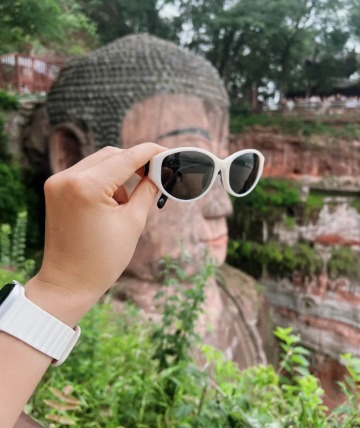
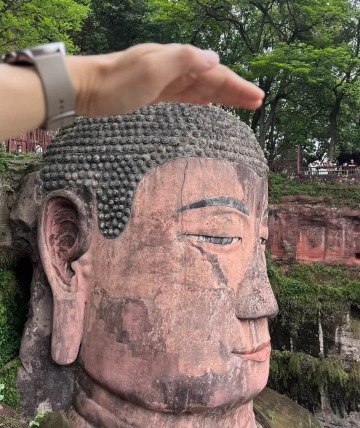
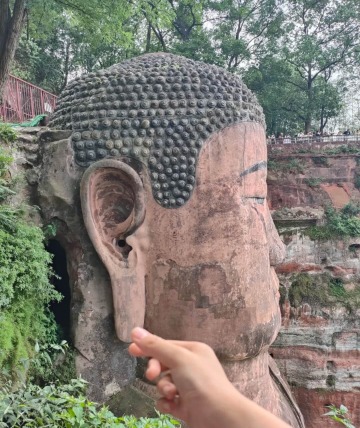
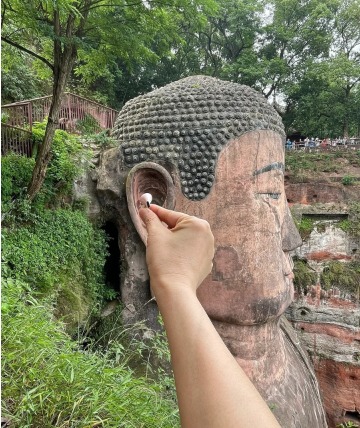
Many visitors enjoy taking fun photos with the Buddha’s head, such as “putting sunglasses on the Buddha,” “touching the Buddha’s head,” “pinching the Buddha’s ears,” or even “putting headphones on the Buddha to listen to music.”
FAQs about the Leshan Giant Buddha China
1. Where is the Leshan Giant Buddha?
The Leshan Giant Buddha is located in Leshan City, Sichuan Province, in the southwest of China. It is about 30 kilometers from Emei Mountain, and if you take the high-speed train, it takes around 20 minutes to get there. From Chengdu to Leshan is about 160 kilometers, which takes roughly 2 hours by car.
2. When was the Leshan Giant Buddha built?
Construction of the Giant Buddha Leshan China began in 713 AD and was completed in 803 AD. It took three generations and 90 years to carve this magnificent statue.
3. How long does it take to see the Leshan Giant Buddha?
If you choose to hike, it will take about 2-3 hours. This way, you can get up close to the Buddha and even stand at its feet to gaze up at its majestic form. If you opt for a boat tour, it will take about 40 minutes, allowing you to appreciate the full view of the Leshan Buddha Statue from the water.
4. Why was the Leshan Giant Buddha built?
The Leshan Buddha Statue was built for both religious and practical reasons. During the Tang Dynasty, Buddhism was flourishing in China, and people hoped that by building a Buddha statue, they could pray for peace and show their devotion. The mountain where the Buddha stands, Mount Lingyun, has long been considered a site of good feng shui, and people believed that building the Buddha here would bring protection and peace to the area.
Additionally, the Buddha was built to help prevent floods. The site is where the Min River, Qingyi River, and Dadu River meet, creating fast-flowing waters that often led to flooding. Locals believed the floods were caused by water monsters that stirred up the rivers. A monk named Haitong decided to build the Buddha to calm the waters and protect the people. He believed the Buddha’s compassion and power could subdue the water monsters, tame the rivers, and bring peace to the people living along the banks.
How to Get to the Leshan Giant Buddha
From Chengdu to the Leshan Giant Buddha
- High-speed train: Take the high-speed train from Chengdu East Station to Leshan Station, which takes about 52 minutes. Once you arrive at Leshan Station, you can take bus 302 or 601 and get off at Jiadingfang Station after 13 stops. From there, it’s a short walk to the Leshan China Giant Buddha Scenic Area.
From Emei Mountain to the Leshan Giant Buddha
- Bus: Take bus 602 from the Huangwan Tourist Service Center to the Leshan Giant Buddha. The trip takes about 2 hours and 20 minutes, passing 38 stops, and costs 10 CNY (about 1.50 USD). The first bus departs at 07:00, and the last one departs at 18:00.
- High-speed train: Take the high-speed train from Emei Mountain Station to Leshan Station, which takes about 15 minutes and costs 9 CNY (about 1.25 USD). Once you arrive at Leshan Station, you can take a free shuttle bus directly to the Leshan Giant Buddha Scenic Area.
Hours & Fees
Hours
Peak season (April 1 – October 7): 7:30 AM – 6:30 PM
Off-season (October 8 – March 31): 8:00 AM – 5:30 PM
Time Required
2-3 hours
Fees
Leshan Giant Buddha: ¥80 per person
Leshan Museum: Free
Eastern Buddha City: ¥80 per person
Practical Tips
It’s best to set aside at least an hour for the climb. The trail can get crowded, and the way down is steep and narrow, which can be hard on your feet. If you’re afraid of heights, you can take a boat ride instead. During peak season, you’ll need to wait in line to descend, and it can take up to 2 hours. So, try to go early to avoid the crowds.
After you visit the Buddha’s head, I highly recommend checking out Lingyun Temple. I’ve heard that the Buddha statue there is the real one behind the Leshan China Giant Buddha. If you want to pray, you can do so there.

